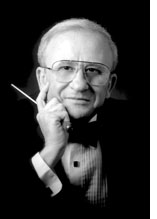|
By David Amos
 SAN DIEGO—The time we spend in the synagogue during the High Holidays is a time for introspection, personal thoughts, repentance, prayer, and a personal accounting of ourselves in relation to the year that just passed. During this time, my thoughts not only wander about the previous year, but to where I am at this point in my life, and what can be improved in the future in the areas of interpersonal relationships, personal improvement, and artistic growth and community involvement. SAN DIEGO—The time we spend in the synagogue during the High Holidays is a time for introspection, personal thoughts, repentance, prayer, and a personal accounting of ourselves in relation to the year that just passed. During this time, my thoughts not only wander about the previous year, but to where I am at this point in my life, and what can be improved in the future in the areas of interpersonal relationships, personal improvement, and artistic growth and community involvement.
I am sure that all of us, in one form or another, go through this process. We hope to come out of the Yamim Noraim better people than when we started.
Do the tunes, chants and melodies of the High Holidays linger in your mind much after the sounding of the Shofar, as they do in mine? Whether you are only an occasional attendee of services or a frequent davener, you notice that there are so many different prayers and their corresponding tunes that are chanted during the holidays, and many of the year-round prayers acquire different melodies during Rosh Hashana and Yom Kippur.
Talking about the melodies only, we know that they come to us from many sources, but, let’s name some of their origins: Many come from decades and centuries of Ashkenazi and Sephardic traditions; other are established adaptations from folk tunes, some recently from Israel and others from many other communities worldwide dating to earlier times. Others were composed by famous cantors and Jewish music directors, and some tunes were created by local cantors of minor historic importance who came up “with the right melody at the right time and place," were heard by congregants, were enjoyed, and in one of many ways came to us by second or third hand via our present leadership.
Most cantors, rabbis, and people involved in leading the chants follow the traditional melodies they heard in their youth and others they learned in their lifetime. This has been the time honored way of passing the baton from one generation to the next.
Believe it or not, some tunes could have been inspired by Protestant hymns, and somehow, made their way to our services. There are some operatic songs which resemble many chants we hear at services. Which came first? This better is left to be researched and discussed another time.
Go to the top of right column
|
|
The most obvious, Kol Nidre, is heard only once a year. We all recognize the famous tune. But this melody has also taken interesting twists and turns. It was popular in European Ashkenazi synagogues during the 1800’s. In one particular Yom Kippur in Germany in the late 19th Century, the composer Max Bruch was invited to attend. Although he was not Jewish (he was Lutheran), he was so inspired and intrigued by the melody, that he adapted a fantasy for cello and orchestra which is in the standard repertory today. All concert and symphony cellists know of it, and hope to perform it. Many do.
After its creation, it has been transcribed to many other solo instruments. I conducted the Israel Philharmonic in a recording which featured the late Meir Rimon, who at the time was the principal French Horn of the orchestra.
There is even a suggestion of the Kol Nidre melody in one of the Opus 59 Quartets by Beethoven. But another significant offshoot where I had the pleasure to participate, was in a work by Lazar Saminsky, a longtime conductor and composer of Synagogue music in New York City. His work “The Vow; Rhapsodic Variations on a Dual Theme for Piano and Orchestra” is a wonderful juxtaposition of two Yom Kippur melodies including the Kol Nidre. You should have seen the expressions of the cellists of the Royal Scottish National Orchestra, during the first reading of the work, with pianist Barry Goldsmith and yours truly! Of course, they recognized it from the Bruch work.
But the holidays give us a treasury of other melodies: The Cohanim chants, which are variations of year-round prayers, Hineni, Ashamnu, S’lach Lanu, Hashofar Hagadol, Unetaneh Tokef, B’Rosh Hashana Tikateyvun, The Kedushah, V’Chol Ma-Aminim, Ki Anu Amecha, Sim Shalom, The Reader’s Kaddish, Ya’aleh, Hayom T’Amtzenu, and so many, many other ones.
In order to enrich our traditions and share with the non-Jewish world the beauty and meaning of these words and melodies, I put it to musicians, composers, and performers who are as enthusiastic as I am about this: Create, compose, commission, and inspire others to use these resources, which are so readily available to us, add new music to the repertory for the concert hall. From orchestral works, smaller ensembles, vocal solos, choral compositions, and even concertos. You do not have to be a musician yourself, but the initiator, the sponsor, or the catalyst to help the expansion of the art-music repertory.
If you are interested, share my vision for these ideas, but do not know where to start, feel free to contact me at San Diego Jewish World.
|
|

